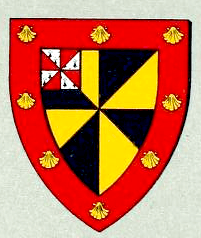Sir Hugh Campbell facts for kids
Quick facts for kids Hugh Campbell |
|
|---|---|
| Religion | Christianity |
| School | Presbyterianism |
| Personal | |
| Born | March 1615 Cessnock, Ayrshire |
| Died | 20 September 1686 Edinburgh |
| Resting place | Greyfriars Kirkyard |
| Senior posting | |
| Title | Baronet of Cessnock |
Sir Hugh Campbell of Cessnock in Ayrshire was an important person in Scotland during the 1600s. He was a baronet, which is a special title, and his family came from the Campbells of Loudoun.
Contents
Sir Hugh's Political Life
Sir Hugh was a Member of Parliament (MP) for Ayrshire in the Scottish Parliament. He served several times: from 1639 to 1641, then from 1645 to 1647, and again from 1649 to 1650.
In 1649, the Scottish Parliament offered him two big jobs: Lord Justice Clerk and Lord of Session. These were important legal positions, but Sir Hugh decided not to take them. Later, his son, Sir George Campbell, took over his family's title.
Challenges and Imprisonment
Sir Hugh faced many difficulties during his life. He was reportedly arrested in 1666 after a conflict known as the Battle of Rullion Green. His home was in a place called Galston.
Trial and Bass Rock
In March 1684, Sir Hugh was put on trial. He was accused of being involved in a large uprising at Bothwell Bridge. The court decided that the accusation was "not proven," meaning there wasn't enough evidence to say he was guilty or innocent.
Even though the verdict was "not proven," Sir Hugh and his son were sent to prison. They were held at a famous prison called the Bass Rock. This prison was on an island in the Firth of Forth, a large bay in Scotland. They were sent there around September 1684.
The Rye House Plot
In 1685, Sir Hugh and his son faced more accusations. They were linked to something called the Rye House Plot. This plot was a secret plan to harm King Charles II. and try to put his son, the Duke of Monmouth, on the throne.
Even though there wasn't strong proof, the Parliament decided they were guilty. Their lives were saved, but they lost their lands, which went to the Crown. They were sent back to prison on the Bass Rock.
Release and Final Days
Sir Hugh and his son were released from prison on August 6, 1685. However, they were arrested again later.
Eventually, Sir Hugh was allowed to leave the Bass Rock and go to Edinburgh. He passed away there and was buried in Greyfriars Kirkyard on September 23, 1686.


